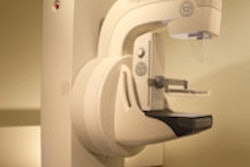Wednesday, December 2 | 12:15 p.m.-1:15 p.m. | LL-IN2148-L05 | Lakeside Learning Center
MDCT data can put a strain on any PACS network, but Japanese researchers have figured out a clever way to handle large MDCT datasets while maintaining access to high-resolution thin-slice CT data. They'll discuss their work in a scientific poster to be presented on Wednesday.Researchers from Nihon University School of Medicine in Tokyo will discuss how with their approach, two MDCT image datasets (a thick-section dataset and a thin-section dataset) and a single-detector CT thick-section dataset are reconstructed. The thin-section dataset is archived on existing PACS disk space earmarked for temporary storage. The source data are then overwritten on the system to preserve disk space, according to the researchers.
The thin-section datasets are then used to provide multiplanar reformatted (MPR) reconstructions. Thick-section datasets are archived permanently.
The researchers had eight radiologists evaluate this approach during a one-week period. Thin-section datasets were used in 79% of the cases, while MPR images were used in 18% of exams. Archival, retrieval, and interpretation times were higher when using thin-section images, but these limitations were judged to be outweighed by the usefulness of the thin-section data, according to the researchers.
The data storage and interpretation model improves the storage system and availability of thin-section MDCT datasets in existing PACS, and prevents the accumulation of an overwhelming data glut, believes presenter Dr. Abe Katsumi, Ph.D.




















